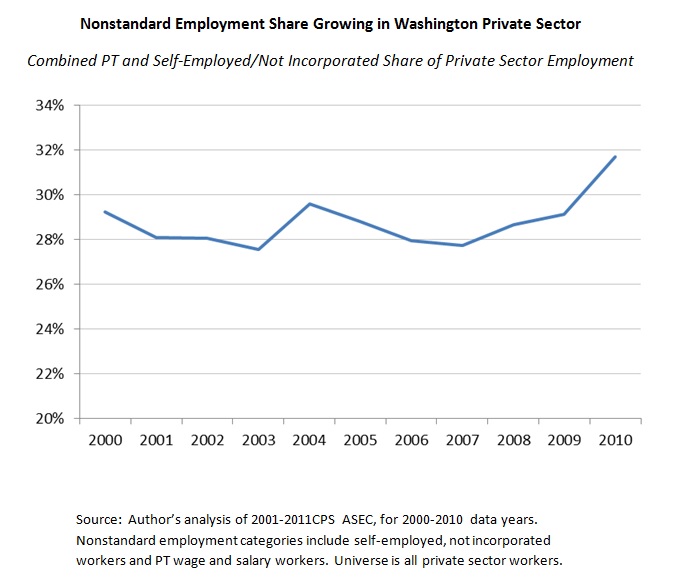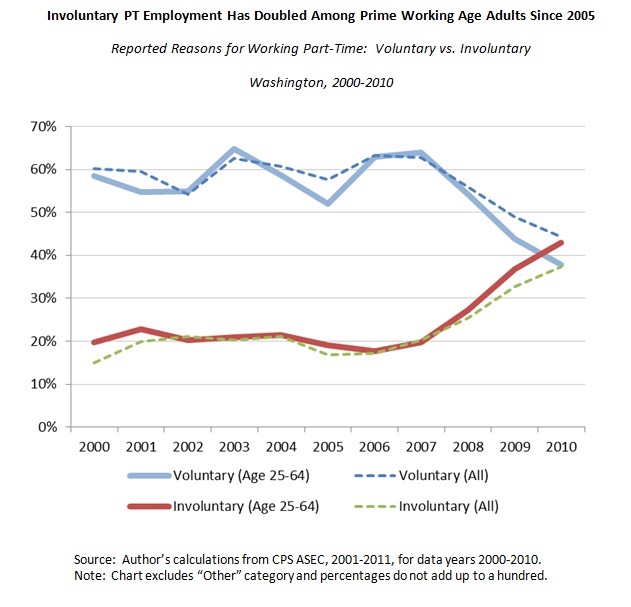Puget Sound Sage has just released a new analysis of state labor trends show that private sector businesses are increasingly transforming regular, full-time jobs into part-time, temporary or contract positions. The full report, Washington’s Changing Workforce is available on our website.
The report finds that nonstandard work now accounts for nearly a third of private sector employment in Washington, or about 916,000 workers according to an analysis of Current Population Survey (CPS) data. Although this figure likely under-counts the share of jobs that are nonstandard, a conservative estimate shows an increase from 27.8% in 2007 to 31.7% in 2010, the latter figure exceeding the late peak of 29.6% in 2004.
One of the greatest drivers of this trend is that a growing number of workers can only find part-time work. In the past, most people who worked PT did so voluntarily because of care giving, work obligations, school, and—in the case of retirement-age workers—because of Social Security limits on earnings.
However, as private sector employers seek to cut labor costs, workers are not arriving at PT work arrangements by choice, but are pushed into these forms of employment because they are unable to find FT employment. In fact the share of prime working age adults (25-64) who are working PT involuntarily has more than doubled since onset of the recession. In 2009, for the first time the rate of prime working age adults who are working PT involuntarily exceeded those working PT by choice.
What does this mean for Washington workers? Less income, less stability and increased pressure to work more than one job to make ends meet! It also means that as more corporations are becoming dependent on part-time, temporary and contract workers, they are effectively cut their workers off employer-based health care. For more information about how the increase in nonstandard employment in Washington affects access to quality health care read our report Washington’s Changing Workforce.


